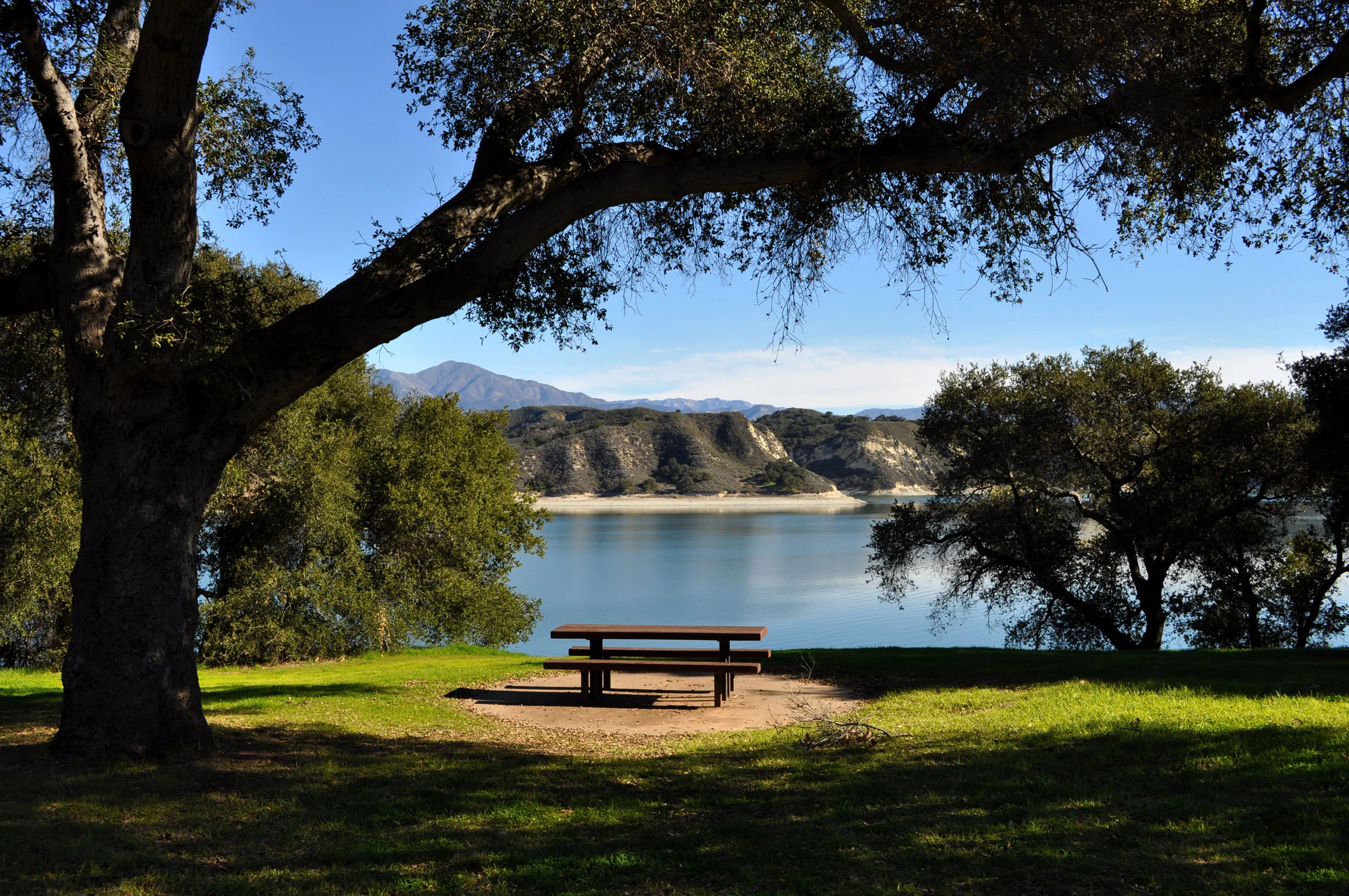Plaza de la Guerra, in the first block of East De la Guerra Street, has been a focal point of the city’s social life since the 1820s. During the Spanish and Mexican eras, the plaza was often the scene of dances, fiestas, and bullfights. Just to the north of the plaza, across De la Guerra Street, stands the former home of José de la Guerra y Noriega, perhaps Santa Barbara’s most prominent citizen during its early history.
Getty Images
In 1855, the city’s common council designated the plaza, along with Plaza Alameda and Plaza Vera Cruz, as a public square or park — the first official parks in Santa Barbara. There the matter rested for the next 20 years, as the plaza remained simply an open area. In 1875, a new City Hall arose in the middle of the plaza. Initially, the two-story brick building housed all city offices, the jail, fire house, and the municipal court.
Construction of the City Hall sparked more development around the plaza. Frenchman Louis Raffour opened the Raffour House at the northeast corner of the plaza in the late 1870s. José Borderre, a Basque sheepherder, opened his French Hotel in the southeast corner of the plaza in the 1890s. These and other businesses maintained the plaza’s position at the center of city life.
De La Guerra Plaza :: Town Hall
De La Guerra Plaza :: Casa DLG
In 1910, the City Hall received a facelift with a new red metal roof and cement facade in the popular Mission Revival architectural style. By the early 1920s, it was apparent that the creation of new city departments and expanding government services dictated new quarters. The city already rented office space around town to accommodate its growing bureaucracy. Voters passed a $200,000 bond issue in 1922. Most of the funds were to go toward construction of a new City Hall at the site of the old Raffour House.
Ronald Sauter and E. Keith Lockard rendered the new facility in the Spanish Colonial style, in keeping with El Paseo and its “Street in Spain” across De la Guerra Street. The move to give Santa Barbara a unified architectural look based upon the Spanish Colonial Revival style was in full swing before the 1925 earthquake, which accelerated this trend. The new City Hall included not only city offices, but the police department and the city jail. The old City Hall in the middle of the plaza was razed, and the plaza landscaped with lawn and flowers.
Anchoring the plaza on the south side was the Santa Barbara News-Press building, designed by George Washington Smith and completed in 1922. At the time of construction, the building housed the Santa Barbara Daily News. In the 1930s, Thomas Storke would buy the rival Morning Press to form the News-Press. In 1951, the tower and the east wing were added to the building.
Shortly after the turn of the 21st century, controversy began to stir when plans were broached to ban autos from the plaza and transform it into a strictly pedestrian area. A number of businesses protested the proposed changes, and the plans were eventually shelved. The plaza continues to play host to a number of festivities during the year including the Fiesta Mercado and Cinco de Mayo celebration to name just two. Taken all together, Plaza de la Guerra, Casa de la Guerra, and El Paseo form a wonderfully evocative complex that is still, in many ways, the heart and soul of the city.
De La Guerra :: Fiesta
Click here for more details on article Independent.com





















